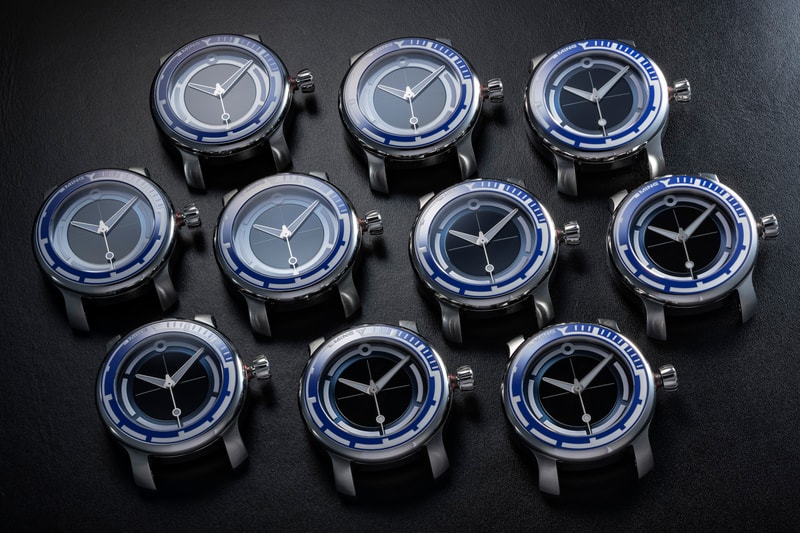Perhaps the alternative title for this post should be “how we set pricing”: after all it’s assumed (more often than not, correctly) that watches are luxury goods with the kind of hyper inflated margins that go with it. In reality, while such production cost to retail price multiples are high for most brands, it’s because there’s a lot of intermediate overhead loaded on: distributor margins, marketing costs, direct ad spend, press gifts, etc. Some of this can of course be cut or minimised such that most of what you pay goes into the actual production and development cost of the watch.
At MING, we do our best to ensure this is the case and believe that it’s much better for everybody concerned to simply make an interesting product that attracts coverage by virtue of what it is rather than what we try to pass it off as. This underpins the first concept of value: price is an absolute number, but value is relative. When there’s a small difference between intrinsic value (i.e. cost) and perceived worth, value is high. A widget at $5 that you never use is cheap but represents poor value, but clear title to the Mona Lisa for a hundred million is expensive, but good value. Notice how this is independent of the actual absolute amount.
We don’t want to limit ourselves to making things that are only very expensive or very cheap; we want to represent value at all price points. This might take some getting used to since especially in the watch game, novices are used to associating value with price and brand instead of horological fundamentals. It is for this reason there are always going to be a lot more diamond pieces sold than independents.

Two other very important considerations to the collector are retained value and discounting; they also happen to be not easily separated. For value to be retained you shouldn’t be able to buy it cheaper elsewhere. If you can, then that automatically lowers the minimum price floor. Discounting actually helps nobody because everybody makes less and value is only ever destroyed: retailers do it because they are motivated to provide incentives to buyers and move volume, over retaining individual product margin. It’s all about cashflow and turnover to ensure they stay in business.
Discounting however is nothing but a race to the bottom: eventually everybody lands up back at the lowest possible price anyway, which is whatever cost plus survival margin happens to be. All this translates to is less money for R&D and customer service: which ultimately results in a worse product for the collector. Yet there seems to be a never ending obsession with obtaining the highest possible discount; surely it would be easier just to have the same published price for everybody and save the hassle, angst and unfairness. I don’t know about you, but we’d rather expend energy on more productive and enjoyable pursuits. We therefore price our products the same for all buyers, including founders/employees - because we expect and provide the same level of service across the board.
The other factor that critically affects retained value is of course supply: this is nothing but basic economics. When demand exceeds supply, prices increase until such point equilibrium is reached. Perceived shortages push the demand further by contributing a sense of urgency; but do this too often and it becomes the marketing equivalent of crying wolf. I am of course referring to the ‘limited edition’ term: it only has legitimacy when the edition is truly limited both in absolute numbers and relative to a brand’s total production, and this does not change even if there is suddenly more demand. Too many brands are guilty of the latter of late.
The best thing we can do for both our collectors and our brand is the following, which form the core value principles of MING:
- Always deliver the best value we can at any price point. We won’t cut corners on component quality, but we are very tight fisted with advertising;
- No discounting, with the exceptions of rewarding early supporters during a very limited pre-order period, and calculating pricing net of PayPal fees etc. This pricing is also consistent and publicly available to everybody;
- For as long as possible we will sell direct because it allows us to keep costs low and ensure all customers experience the same standard of service, which goes outside our control with third party distribution;
- When we apply the term ‘limited’ it truly means limited: no reissues, a small absolute number produced; low numbers relative to our total production, which itself will always be low compared to larger brands.
So far this has worked out quite well for everybody: most of our discontinued watches trade above original list prices on the secondary market, which very few brands can claim. It allows us to price where we need to price to continue making the watches that excite us all. It is a strong testament to the brand’s perceived and retained value, and allows you as a collector to be confident that what you’ve spent is buying you the best watch we can make at that price point, and probably somewhat above.
- MT
Published: June 2019





